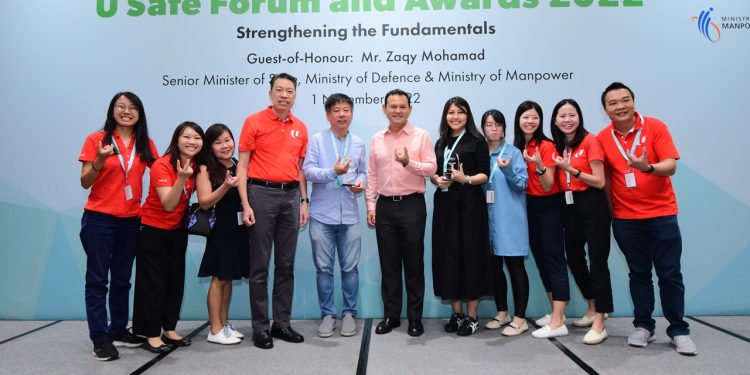I recently found myself at a police coast guard base near the far-western reaches of our tiny island state.
It was a scorching Friday morning, unlike the wet and gloomy days that preceded it.
I was there to visit one of the facility’s maintenance contractor, QE Elemech Engineering Pte Ltd (QE Elemech), to observe how they ensure the safety of their workers onsite.
A Champion for Workplace Safety
QE Elemech is a local SME and engineering service provider for mechanical, electrical and fuel distribution systems.
Established in 2003, the company has secured many government projects, such as installing integrated systems for bulk fuel tanks and piping systems for the Civil Defence team and MRT depots.
Earlier this month, the company was recognised at the NTUC U Safe Forum and Awards 2022 for its efforts in championing safer working environments for its workers.
The company had also previously received safety recognition from several clients, including SBS Transit.
With this year’s 40 workplace fatality incidents already exceeding the total for the last two years (30 in 2020 and 37 in 2021), I decided to find out what companies like QE Elemech are doing differently to protect their workers while at work.
First Things First, Safety First
With my left hand forming an improvised sunshade and my eyes squinted, I hurriedly made my way towards a group of six workers who had just disembarked from their truck within the confines of the base.
The team was about to conduct their monthly routine maintenance check of the facility’s fuel distribution system.
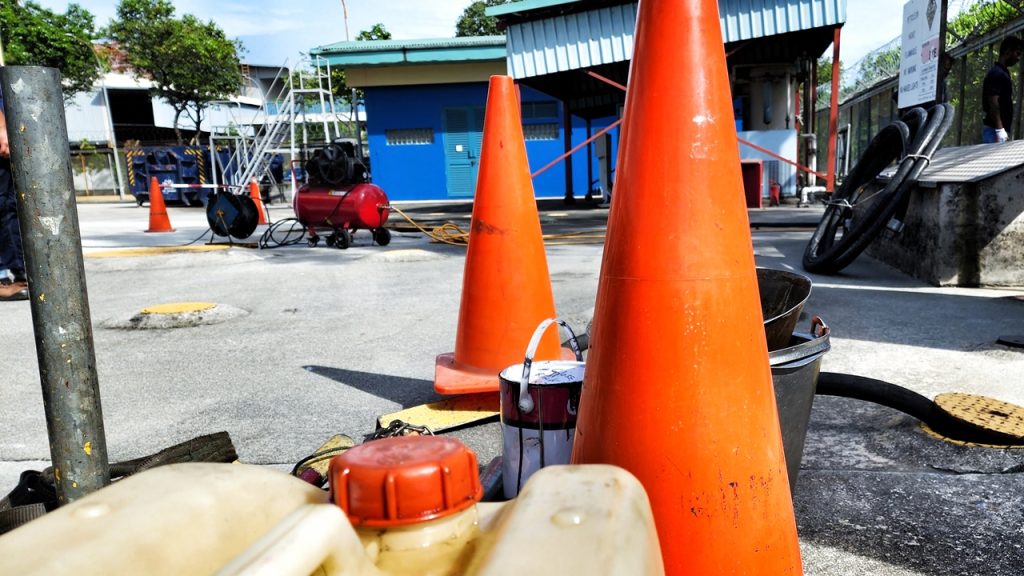
As I introduced myself to the group’s maintenance manager Amos Ang and site supervisor Surjabhan Rai, I noticed that the other four workers had instinctively set up a small perimeter around their worksite with safety cones to warn others of the impending work.
Once they were done, Surjabhan rounded the team up next to the company vehicle for a pre-work safety briefing.
He began to outline the safety pointers for the day. Most of them seemed obvious, such as not smoking, not using a mobile device near the fuel tanks, donning the appropriate safety gear for different tasks, and not wandering off without informing himself or a coworker.
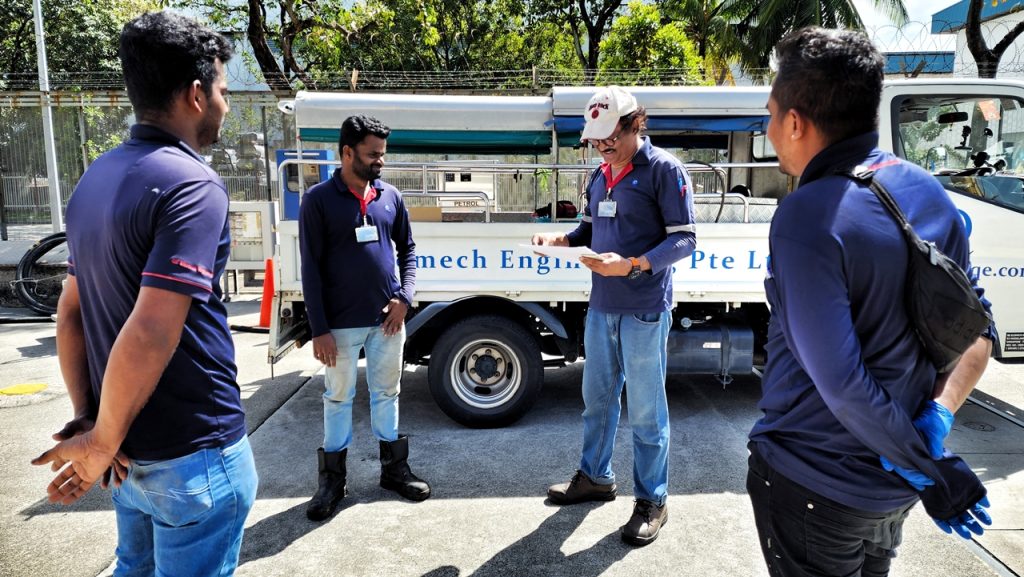
“We typically do the safety brief when we are at a new site, or we have newcomers or interns like today,” Surjabhan explained after the briefing, pointing to a young female worker within the group.
“Other than that, I usually just keep an eye on the workers and remind them of the safety protocols as we move along,” he added.
I asked Amos and Surjabhan if workplace accidents were common in their line of work and if there had been any lapses since they began working with the company.
Amos, who had been working for the company for the last 13 years, said that the only injuries he could recall the workers sustaining were cuts to their hands.
“This is why we repeatedly tell our workers to wear gloves while they work,” he said.
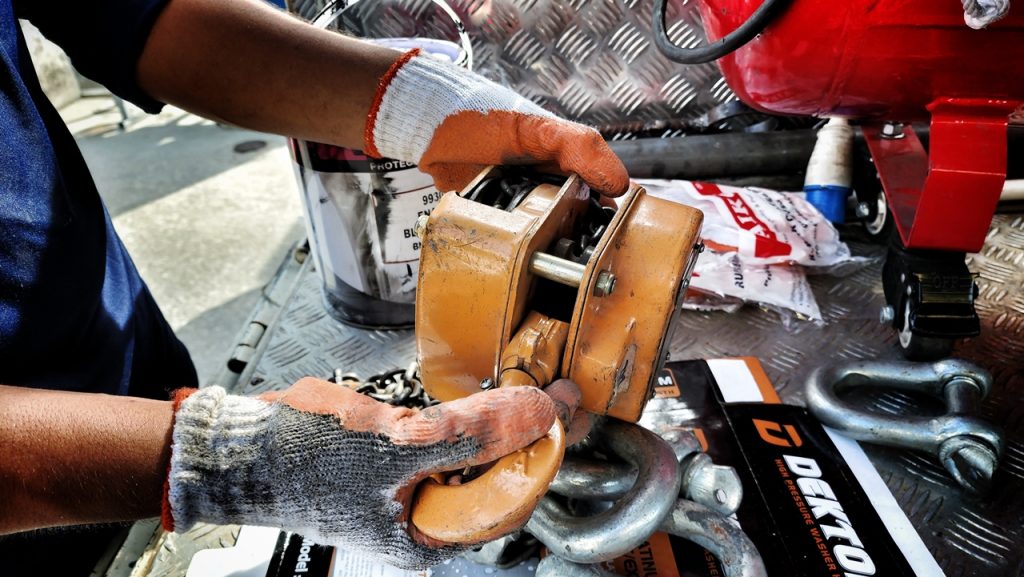
As for Surjabhan, he shared: “Well, I have only been with the company for about two years, and so far, I have not seen any serious injury.”
He added: “But I have been in the industry for quite a while now, and I can say common injuries that I have seen are back injuries, you know, from heavy lifting. But so far, we have managed to avoid such injuries [at QE Elemech].”
Observing the Team
I was eager to observe how the company had maintained their healthy track record for workplace safety and the tools they have at its disposal.
One of their first tasks was to expel the excess rainwater built up in the underground cavity where the fuel tanks lay. Unfortunately, the only way to access the tanks was by removing a rather hefty-looking manhole cover.
While I was sure that one person could probably lift the cover on his own, the workers instead opted to work in pairs to lift the covers in tandem, using tools fashioned out of iron rebars.
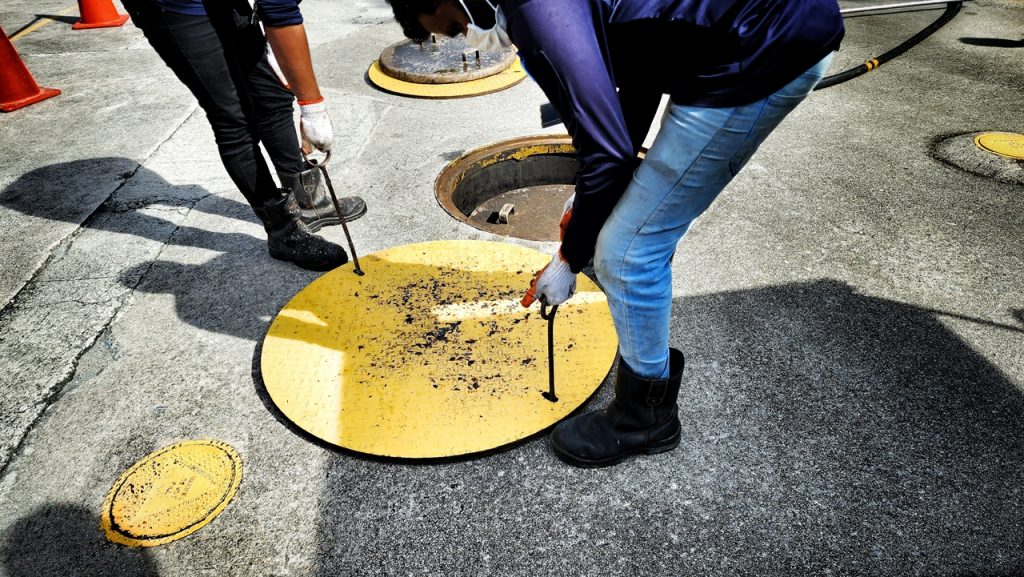
Even though there were six staff onsite, they also avoided overcrowding themselves.
When tasks only required two workers, the others busied themselves with other duties, such as unloading the equipment from the truck or setting up the water pump to expel the excess water.
And yes, safety gloves were always worn regardless of the task.
We next made our way towards the floating docks where the coast guard ships berthed to check on the pumps and the fuel lines.
Even though none of us had any intention of taking a morning dip in the ocean despite the searing heat – everyone, including me, had to don a lifejacket.
To test the pumps, the team had a large metal container on a trolley to pump the fuel into, which they would pour back into the tanks at the end of the day.
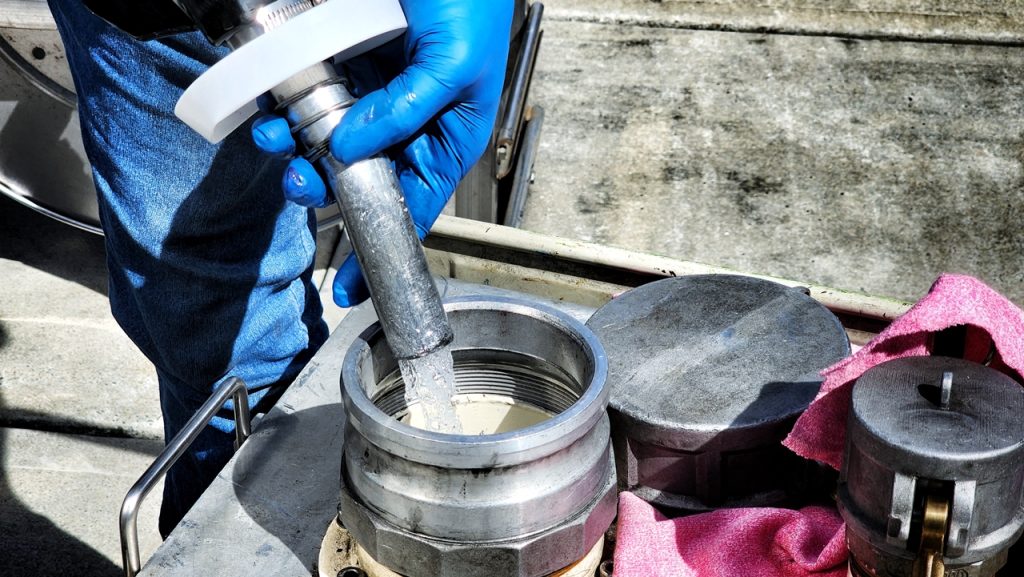
Curious, I asked why they could not just use a plastic jerrycan for the job since it would be lighter and less cumbersome to move around.
“Certain types of gasoline can be corrosive to plastics, so we do not use those as a precaution,” Amos explained.
My Conclusion
There were more checks to be done after the docks that day, but Surjabhan insisted that his crew break for an early lunch to rest, recharge and hydrate themselves.
So I left the worksite around noon that day, feeling underwhelmed by what I had seen.
I had hoped to see some extraordinary safety procedures, such as technology and modern equipment, requiring workers to perform less manual and dangerous work.
That was not to be the case.
But then it struck me that worker safety was not always about investing money into new technology or finding new ways to perform existing tasks.
It was about reminders and repetitions, instilling good working habits into workers, and throwing in some good old common sense about safety into the mix.
This was where QE Elemech had excelled. The company had shown that in their quest to provide a safe working environment for their workers, all they had to do was to avoid complacency and be mindful of their workers’ wellbeing.
Speaking to QE Elemech Managing Director Frankie Lim, he said: “Workers work better when they know their workplace is safe. When management enforces workplace safety, workers are more willing to report any unsafe issues on the ground.
“This, in turn, makes the work environment more conducive.”

